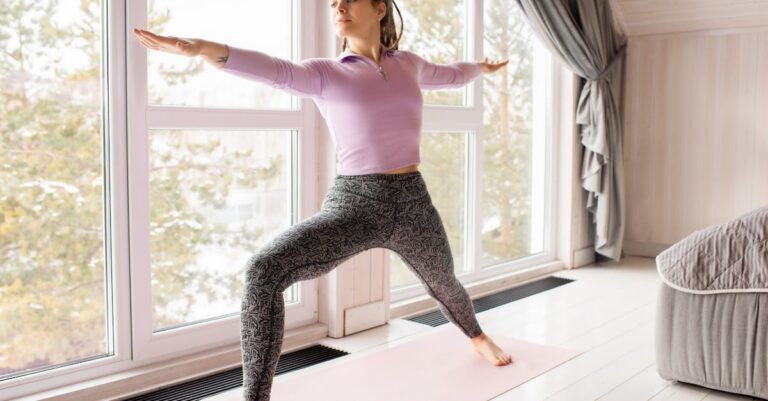Ever feel like you want to work out at home, but just… don’t? Maybe you start strong for a few days, then life gets busy, or you just stare blankly at your living room floor, unsure what to even do. You’re not alone! Figuring out a home workout routine can feel like trying to solve a tricky puzzle. This article is here to help you put those puzzle pieces together. We’ll walk through how to create a simple, doable weekly workout plan that fits your life. By the end, you’ll have a clear roadmap to get moving consistently, feel stronger, have more energy, and finally stick with it without feeling overwhelmed or confused.
Figure Out Your ‘Why’ and What You Want
Okay, first things first. Why do you even want to work out? Seriously, take a minute and think about it. Is it to have more energy to play tag with your kids without feeling like you’re gonna keel over? Maybe you want to feel stronger when carrying groceries, or perhaps you’ve got a goal like running a local 5k race. Knowing your “why” is like having a compass; it keeps you pointed in the right direction when things get tough.
Once you know your why, think about what you specifically want to achieve. Don’t just say “get fit.” Get a little more specific. Like, “I want to be able to do 10 push-ups” or “I want to walk for 30 minutes without stopping.” Keep it realistic! If you haven’t worked out in ages, aiming to run a marathon next month probably isn’t the best starting point. Start small, celebrate the little wins, and build from there.
Take Stock: What Time and Space Do You *Really* Have?
Let’s be real – most of us are busy. Saying you’ll work out for an hour every day might sound great, but is it actually possible with your schedule? Look honestly at your week. When do you have pockets of time? Maybe it’s 20 minutes before the kids wake up, 30 minutes during your lunch break, or 25 minutes after dinner. It doesn’t have to be a huge chunk of time! Consistency with shorter workouts is way better than planning long ones you can never stick to.
Now, where will you actually do these workouts? You don’t need a fancy home gym. Your living room floor, a corner of your bedroom, or even your backyard can work perfectly. Just make sure you have enough space to move around safely without bumping into furniture or tripping over toys. Think about it like setting up your homework spot – you need a dedicated little area where you can focus on your exercises.
Pick Your Moves: What Kind of Exercise Floats Your Boat?
Exercise isn’t one-size-fits-all. There are three main types to think about:
- Cardio: Gets your heart pumping! Think dancing, brisk walking (even indoors!), jumping jacks, or jogging in place.
- Strength: Makes your muscles stronger. This can be using weights, resistance bands, or just your own bodyweight (like squats, push-ups, lunges, planks).
- Flexibility & Mobility: Helps you move easier and prevents stiffness. Think stretching, yoga, or simple joint movements.
The best plan usually includes a mix of these. But here’s the secret sauce: choose activities you actually find okay, or even fun! If you absolutely hate running, don’t force yourself to run every week. You’ll just end up dreading it. Maybe you prefer dancing around your living room, following a strength video online, or doing some relaxing yoga stretches. Experiment a bit! There are tons of free videos and resources online to try out different things.
Build Your Weekly Schedule: Put It on Paper (or Screen!)
Alright, now it’s time to connect the dots. Grab a calendar, a planner, or just a piece of paper. Look at the time slots you identified and start penciling in your workouts. Aim for a balance.
For example, a simple starting plan might look like this (remember, this is just an example!):
- Monday: Strength (20 mins – squats, push-ups, lunges)
- Tuesday: Cardio (25 mins – brisk walk or dance video)
- Wednesday: Active Rest (15 mins – stretching or gentle walk)
- Thursday: Strength (20 mins – planks, rows if you have bands/weights, glute bridges)
- Friday: Fun Cardio! (30 mins – bike ride, longer dance session, sports)
- Saturday/Sunday: Rest or longer activity if you feel like it (like a hike or longer walk).
Super Important: Schedule rest days! Your body needs time to recover and get stronger. Don’t think you need to go hard every single day. Writing it down makes it feel more official, like an important appointment you don’t want to miss.
Keep It Fresh and Fun: Avoid the Workout Rut
Doing the exact same thing week after week can get boring pretty fast. And when you’re bored, it’s easy to quit. So, plan to mix things up! You don’t need to overhaul your entire schedule constantly, but small changes can make a big difference.
Maybe one week you swap your usual squats for jump squats if you feel energetic. Or try a different online workout video for your cardio day. You could focus on different body parts on your strength days. Tracking your progress can also be motivating – maybe you notice you can hold a plank for longer, or do more push-ups than when you started. It’s not just about the scale! Keeping a simple log of what you did and how you felt can help you see how far you’ve come.
Listen to Your Body and Be Flexible
This is huge. Your workout plan is a guide, not a set of unbreakable rules. Some days you’ll feel full of energy, and other days you might feel tired or sore. It’s okay! Learn to listen to what your body is telling you.
If you’re really sore from yesterday’s strength workout, maybe swap today’s planned workout for some gentle stretching or a walk instead. If you’re feeling sick, take a rest day (or two!). Pushing through pain or exhaustion is usually not a good idea and can lead to injury or burnout. Also, don’t beat yourself up if you miss a workout because life happened. It’s totally fine. Just jump back into your routine the next day or whenever you can. The goal is consistency over the long run, not perfection every single day.
So, creating a weekly home workout plan doesn’t have to be some big, scary thing. It’s really about knowing yourself – understanding why you want to exercise and what you hope to achieve. Then, it’s about being realistic with your time and space, and choosing activities you won’t totally dread. Putting it all down in a schedule makes it real, like planning anything else important in your week. Remember to mix things up to keep it interesting and, most importantly, listen to your body and be flexible. Missing a day isn’t failure; quitting altogether is. Start simple, stay consistent, and you’ll build a habit that makes you feel great.










